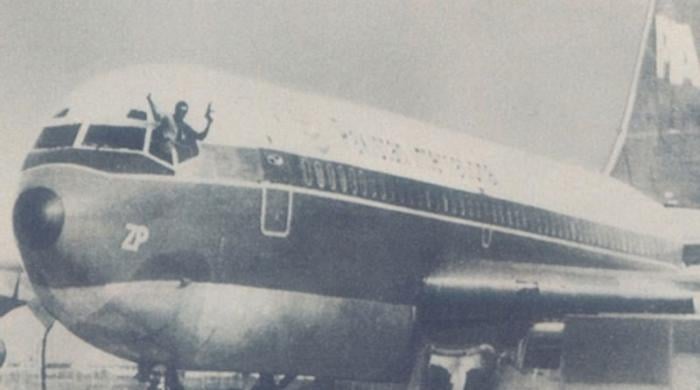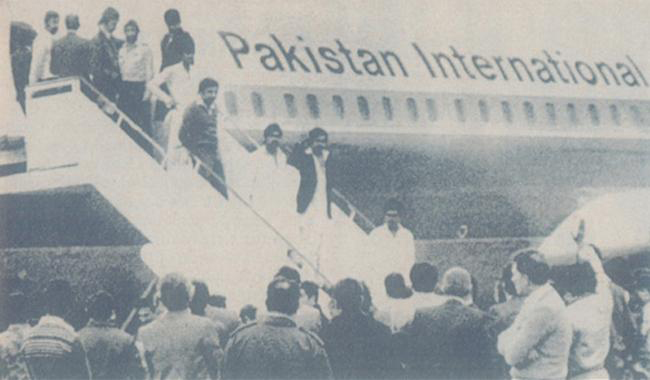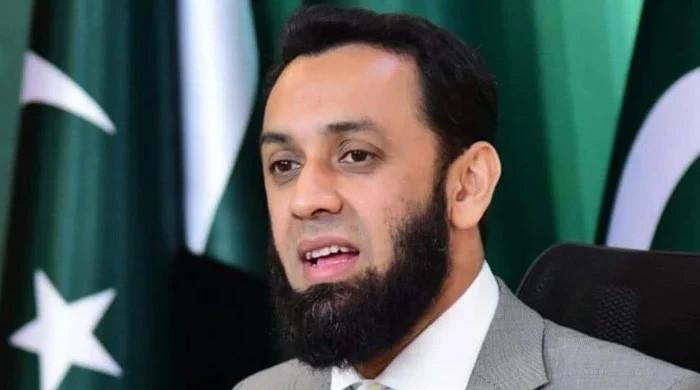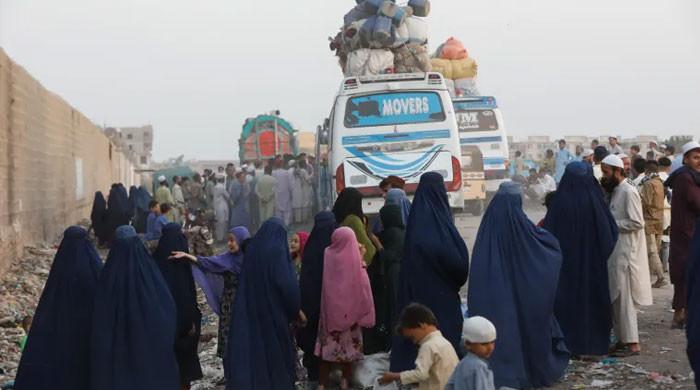36 years after the hijacking
From the moment it began, the 1981 PIA hijacking was shrouded in mystery
March 03, 2017

On March 2, 36 years ago, TV screens flashed with a news item that shook Pakistan, damaged its democratic struggle against military dictatorship and created an irreversible split in the Pakistan Peoples Party, as well as the Bhutto family.
The year was 1981. A passenger aircraft of the Pakistan International Airlines, on its way from Karachi to Peshawar, was hijacked and diverted, on gunpoint, to Kabul, Afghanistan, and then to Damascus, Syria.
It took 13 days, and the release of 54 political prisoners by Gen. Zia-ul-Haq, for the safe release of the passengers on board. Ironically, only one person benefited from the ordeal, Haq, who used it as a justification to prolong his notorious rule.
The PPP, on the other hand, took a long time to recover from what transpired and to thereafter rebuild its credentials.

From the moment it began, the entire incident was shrouded in mystery. Few had heard of the Al-Zulfiqar Organisation (AZO), headed by Mir Murtaza Bhutto and Shahnawaz Bhutto, sons of the former Prime Minister Zulfiqar Ali Bhutto. And even fewer today know what motivated the men. Maybe a belief in an ideology or a political romance for a leader, we can only speculate today. Regardless, two of the three hijackers are now living nondescript lives, stripped of nationality and identities, in some corner of the world. In private conversations with friends, the men admit that they regret their decision but are reluctant to speak out, after all these years.
Even more troublingly, 19 of the PPP workers released that day went missing soon after.
Shortly after the ordeal concluded, Benazir Bhutto and Mir Murtaza Bhutto developed differences that remained etched till his last days. After Ms Bhutto ended her exile in 1986, she further distanced herself from her younger brother.
What I discovered, while reporting on this incident, was that Arshad, one hijacker, was reluctant from the very start to go ahead with it. He had no criminal record and was instead told that the men would travel to Kabul by road after landing the plane in Peshawar to meet the Bhutto sons. The other two hijackers were Salamullah alias Tipu and Nasir Jamal.
Tipu, it was later revealed, was the real mastermind. A few days prior to the incident, Tipu was instructed to postpone the hijacking. But he was desperate, as the police were on his tail for the killing of an IJT activist in Karachi. He was hanged in 1984 on the charges of killing an Afghan in Kabul. As for the other two, they were on the run as fugitives before settling in Libya. Later they were arrested and remained behind bars for a considerable number of years, only to leave after Col. Qaddafi’s death. Their whereabouts are unknown today.
In 1993, Murtaza Bhutto denounced the organisation and formed PPP (Shaheed Bhutto). He was gunned down in 1996 in a controversial police encounter. Other AZO workers were either killed or disappeared during Haq’s rule. One of the activists was Altaf Abbasi, who is said to have a role in the 1972 hostage incident of Israeli players.
What happened to the AZO should be a lesson for the young political workers to refrain from violence. Even today, thousands of political and ideological workers take up arms, either in the name of ethnic, sectarian or nationalist ideologies. As AZO proved such adventurism is a road to nowhere.
The writer is the senior columnist and analyst of GEO, The News and Jang.
He tweets at @MazharAbbasGEO
A version of this article appeared in The News











